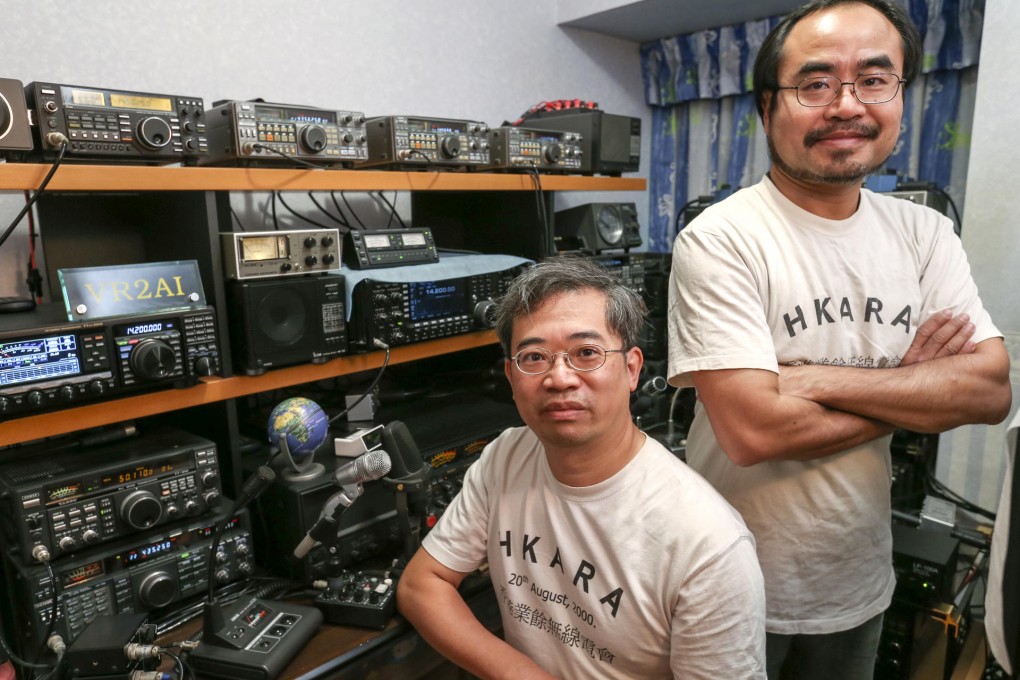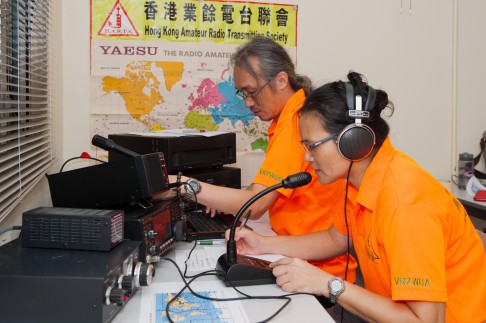Hong Kong's ham radio enthusiasts lend a helping hand
More than just a hobby and a way to socialise, amateur radio provides vital communications to ensure the safe running of Hong Kong's charity events, writes Bernice Chan

Competitors in the SHKP Vertical Run for the Chest 2013 wait nervously for the signal to run up 2,120 stairs to the 100th floor of Hong Kong's tallest building. Two staff members watch monitors on a table at one side showing every floor of the International Commerce Centre.
Three men sit next to them at another table with black boxy equipment that looks like it could be components of a sound system from the 1990s. The three are ham radio operators, and more than 40 enthusiasts arestationed at every few floors to report if a participant needs medical assistance during the charity race.

Chan, 63, describes the work they do in technical terms, demonstrating both his proficiency and passion for his hobby. He is proud of the history of Harts, which was established more than 80 years ago by a group of British Army officers.
"When you make radio contact with another person, you provide a written confirmation of contact called a QSL card and send it by mail. We have ones from Britain dating back to 1930," he says.
After the handover, the group of 1,000 members was renamed, with the addition of "amateur", indicating that most of its members are radio buffs.